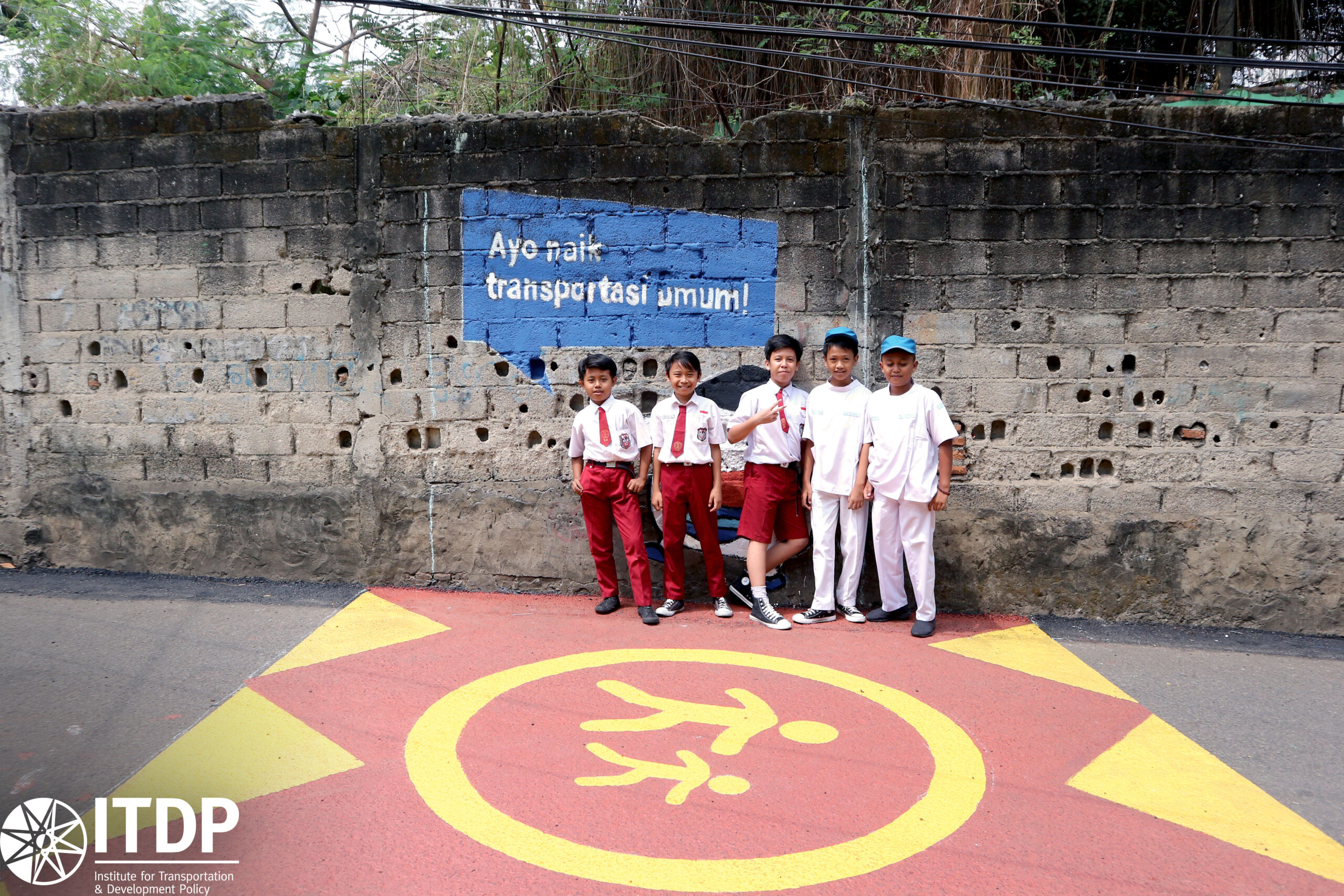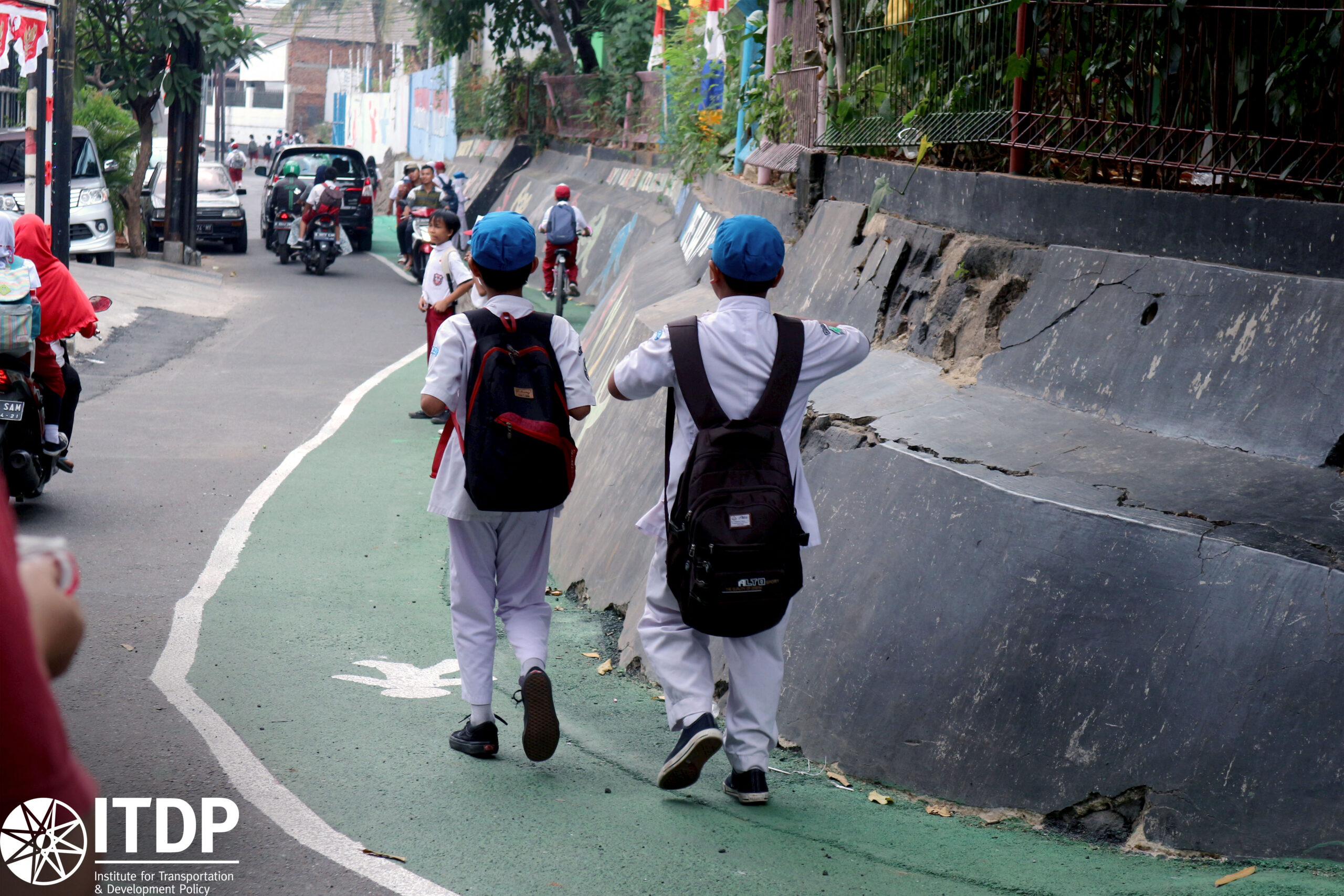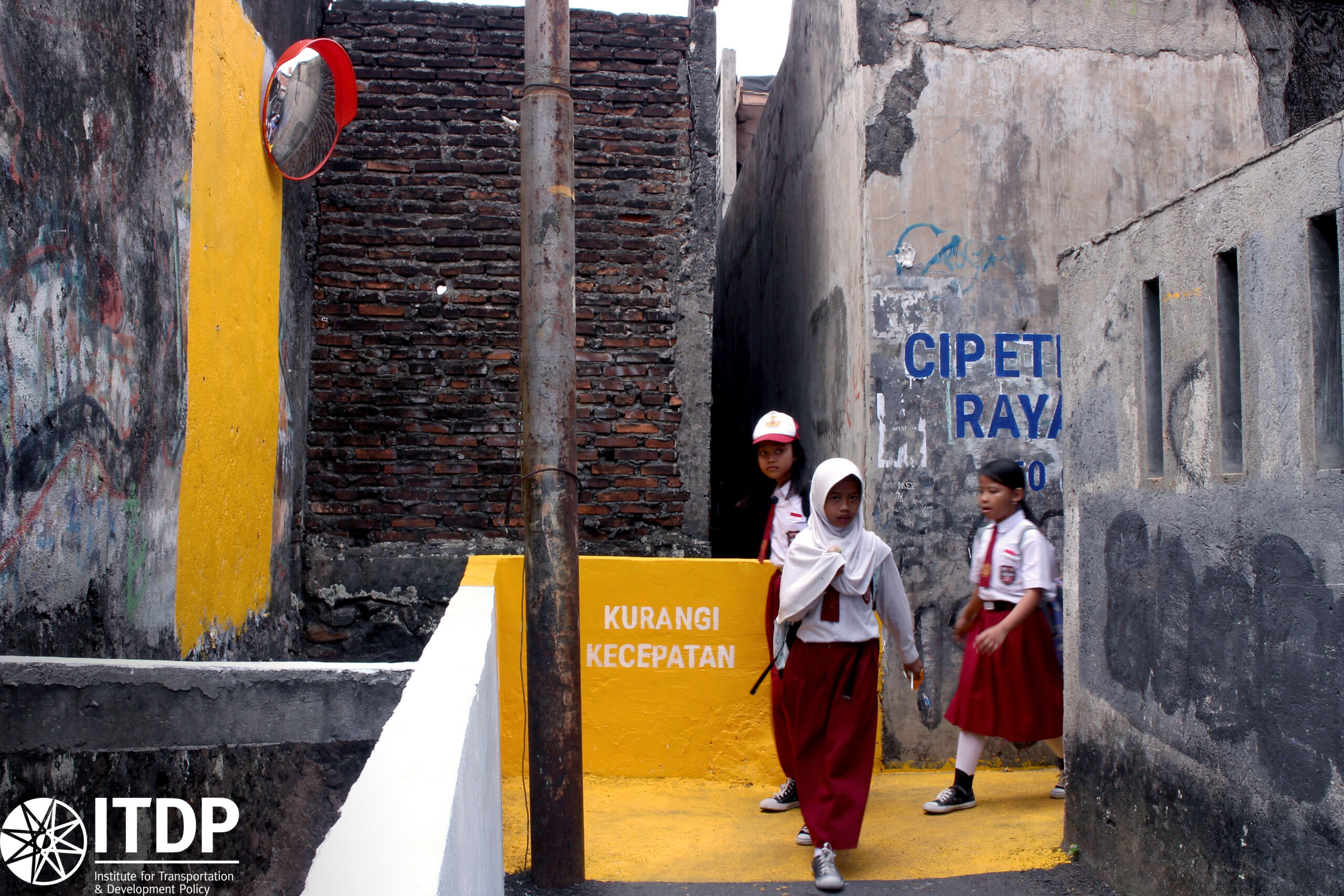August 07, 2025
The Kids Are (Not) Alright
By Alfisahr Ferdian, Transport & Informal Public Transport Associate ITDP Indonesia
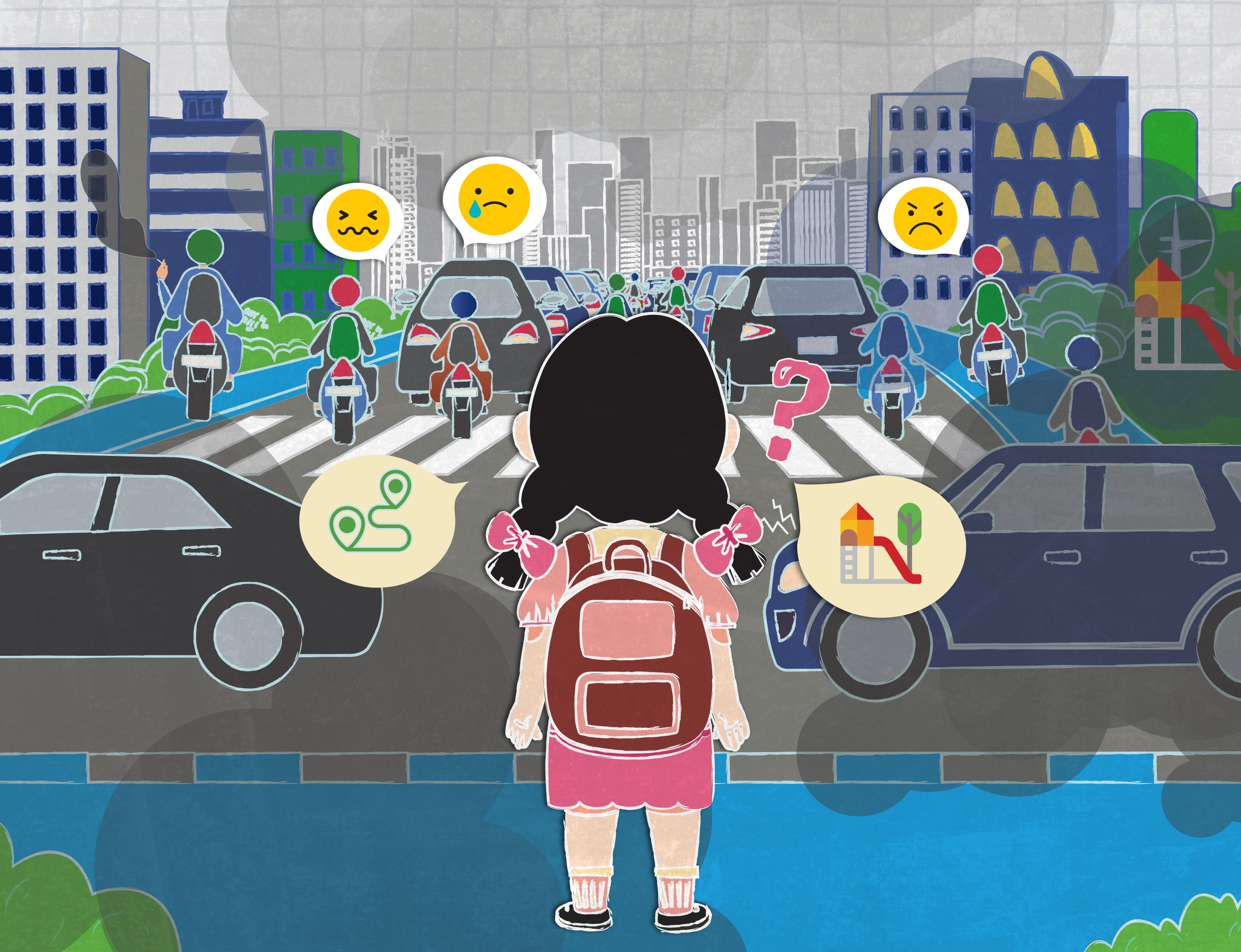
Children are part of the urban society whose right to safe and convenient mobility in the city remains unfulfilled. The lack of an inclusive and integrated urban mobility system forces children and parents to rely heavily on private motorized vehicles, contributing further to pollution and congestion. And once again, children suffer the most. In Jakarta, air pollution is linked to over 7,000 cases of cardiorespiratory illness in children each year¹, while traffic accidents in 2023 were largely dominated by high school students, with over 113,000 reported cases².
As a father of one who is about to enter school age, I do hope my child will one day be able to travel independently, not only to foster a sense of responsibility but also to build self-reliance. However, the lack of safe infrastructure and inclusive urban mobility systems raises serious concerns. In this situation, it is difficult for parents to give full trust to the public transportation system, because a sense of security is needed not only by children, but also by parents as part of the child’s development process.
In other countries, it’s normal for children to go to school using public transportation. In Japan, for instance, children are accustomed to taking trains and buses from an early age. They are taught to navigate the city independently, and the transport system is specifically designed to be safe, punctual, and child-friendly. In the Netherlands, 75% of children cycle or walk to school, supported by wide, secure bike lanes that connect directly to homes and schools.
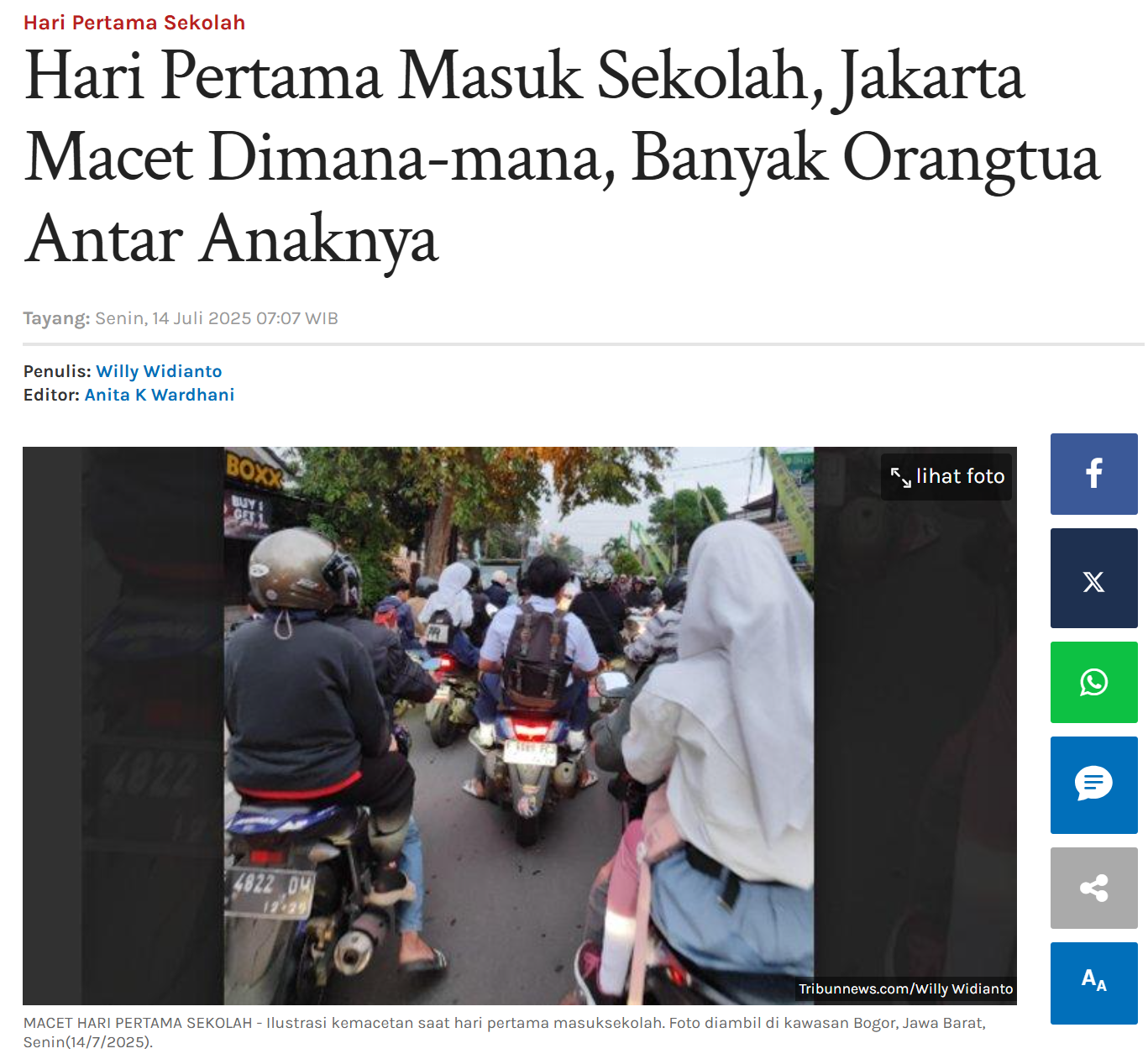
This stands in contrast to what is happening in Indonesia, particularly in major cities. According to 2024 data from Statistics Indonesia (BPS), only 7.77% of students in Indonesia use public transportation to get to school, a sharp decline from 16.16% in 2012. Meanwhile, the use of private vehicles has surged to 63%, more than doubling from 29.39% in 2012. This trend indicates that children and students are increasingly moving away from public transportation and becoming more dependent on being driven by parents or using private motorized vehicles, including motorcycles.
The declining trend in public transport use has led to several consequences, including worsening traffic congestion, increased air pollution, and higher risks of traffic accidents. According to data from the Indonesian National Police Traffic Corps (Korlantas Polri), high school students accounted for the highest number of traffic accidents, with 96,000 cases in 2022, rising by 17.7% to 113,000 cases in 2023. Several factors contribute to the low use of public transportation among children in the Greater Jakarta area (Jabodetabek), including:
- Limited public transportation services connect schools and residential areas. According to 2023 data from Statistics Indonesia (BPS), only 12% of schools in Indonesia are served by fixed-route public transport. This lack of service coverage poses a major challenge, particularly in Jakarta’s surrounding areas such as Bogor, Depok, Tangerang, and Bekasi, which are densely populated regions that remain underserved by public transportation. The Transjabodetabek service, which has the potential to support intercity student mobility, is still not integrated with school environments.
- Limited choice of modes that are available in the morning. Transportation options in the morning are limited. Many public transportation services only start operating after 6 am, while students in Jakarta generally must arrive at school by 6:30 am. Data from the Ministry of Transportation in 2021 shows that only about 65% of public transportation operates before 6:00 am.
- Public transportation facilities are not child-friendly. Children, especially students, are often not given priority seating on public transportation. On semi-formal services such as angkot or small buses, they are frequently passed over by drivers who perceive them as less profitable passengers. This stems from student fare discounts that are not yet fully subsidized by the government through schemes like the Public Service Obligation (PSO), which are meant to offset operational costs for service providers.
- The unsafe road infrastructure around schools. Data from the Ministry of Public Works notes that only 18% of roads around schools have sufficient sidewalks or bus stops. This makes walking or waiting uncomfortable and dangerous.
- Parents’ trust in the public transport system is low. Many parents feel safer driving their children alone due to concerns about safety and punctuality. Research shows that parents’ perceptions of safety conditions at bus stops or stations, as well as poor pedestrian infrastructure, are key barriers to encouraging children to use public transportation to school.
Despite the challenges, several local governments, especially in the Greater Jakarta area, have begun to take initiatives. In Jakarta, for instance, the city’s Department of Transportation operates a free school bus service with 31 regular routes and 15 zonal routes, including dedicated services for students with disabilities. These buses are equipped with air conditioning, CCTV, Wi-Fi and accessible seating. Bogor City and South Tangerang also provide free school buses, while Bekasi Regency has begun operating similar services in areas far from the city center.
Meanwhile, public transport operators, especially in Jakarta, also conduct several educational programs such as Goes to School by MRT Jakarta, Edu Wisata by LRT Jakarta, and Field Trip by Transjakarta.
So, how can the public transportation system be a solution to children’s mobility needs?
- Expand the range of services and operating hours of public transportation to residential areas and schools.
- The design of public transportation fleets and bus stops should be child-friendly. For example, access to hand grips that can be reached by children, as well as visual information that is appropriately sized and placed for easy readability by children.
- Development of safe infrastructure for child pedestrians and cyclists.
- Integration of fares and services between transportation modes within the agglomeration area, including the implementation of special concessionary fare schemes for children.
The Transjabodetabek service has great potential to be a solution for student mobility across cities in agglomeration areas. However, this service needs to be reformulated to be more child-friendly, both in terms of facilities, schedules, routes, and fare incentives for children. The future of Jabodetabek mobility is not only about technological advances or efficiency, but also about inclusivity and prioritizing vulnerable groups, including children. By creating a safe, comfortable, and child-friendly public transportation system, we are not only reducing congestion and pollution but also instill a culture of sustainable mobility from an early age.
1 Syuhada, G., Akbar, A., Hardiawan, D., Pun, V., Darmawan, A., Heryati, S. H. A., Siregar, A. Y. M., Kusuma, R. R., Driejana, R., Ingole, V., Kass, D., & Mehta, S. (2023). Impacts of Air Pollution on Health and Cost of Illness in Jakarta, Indonesia. International Journal of Environmental Research and Public Health, 20(4), 2916. https://doi.org/10.3390/ijerph20042916
2 Muhammad, D. A., Maulana, A. (2025, Januari 19). Pelajar SMA Penyumbang Kecelakaan Terbanyak Sepanjang 2023. Kompas. Accessed from https://otomotif.kompas.com/read/2024/01/19/193100615/pelajar-sma-penyumbang-kecelakaan-terbanyak-sepanjang-2023

